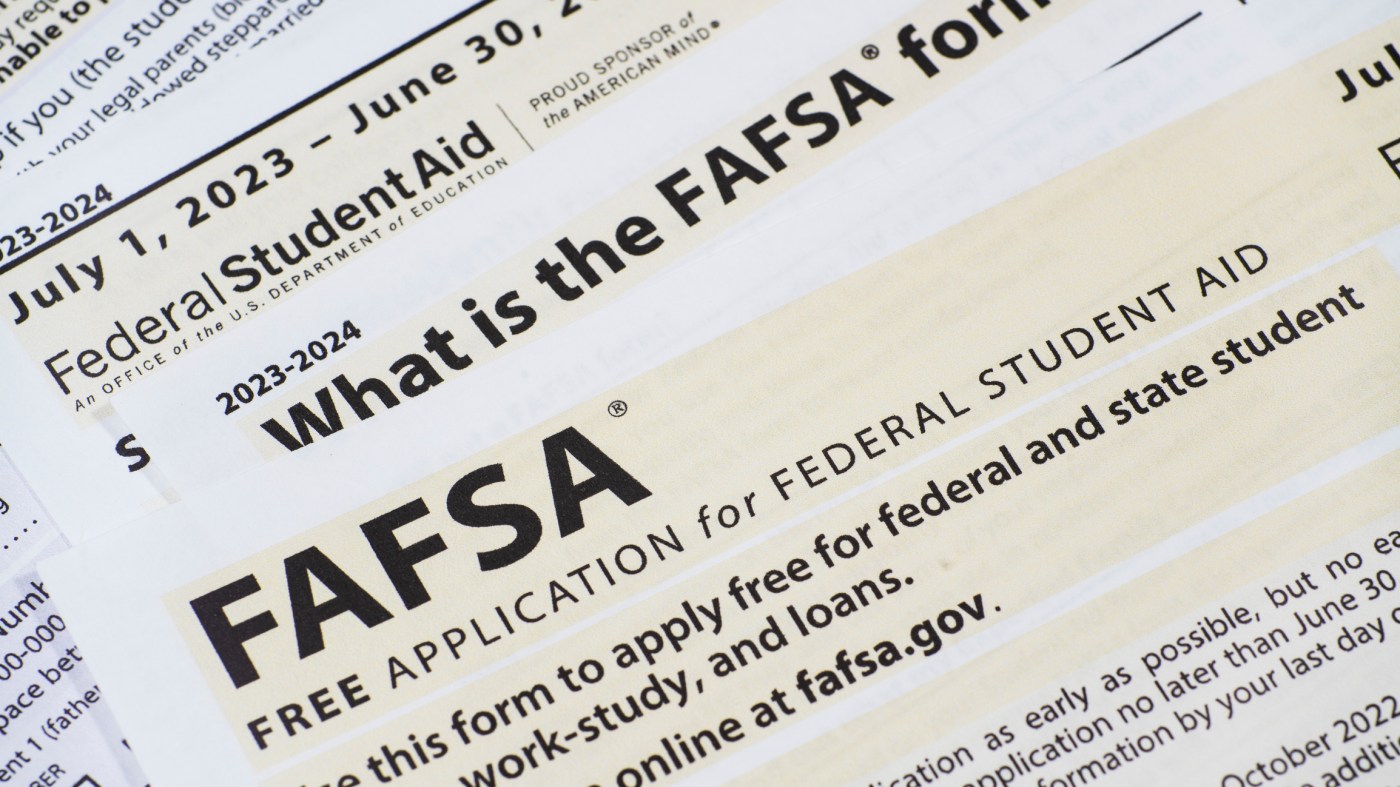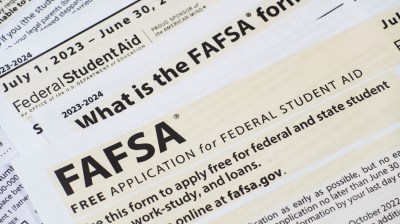Even when they’re running well, big systems can produce a lot of errors.
Seventeen million people fill out the U.S. Department of Education’s Free Application for Federal Student Aid, or FAFSA, every year. As its name suggests, this form provides students with need-based government grants and loans for college. About one-third of undergraduates receive Pell grants, the main form of aid, without which many couldn’t attend college.
But after Congress mandated a “Better FAFSA” in 2021, the new system arrived three months late and botched 30 percent of applications. At this rate, it was producing about 25,000 errors a day. As a result, a quarter-million high school seniors who would normally have filled out the FAFSA have skipped it altogether. For those with financial need, this generally means not going to college. In the end, a botched IT implementation may reduce college enrollment more than the COVID-19 pandemic did.
It’s become the worst federal IT rollout since the Obamacare exchange fiasco that eventually led to the resignation of Health and Human Services Secretary Kathleen Sebelius. FAFSA has claimed a scalp too: Richard Cordray, a veteran of Washington bureaucracy, who led the Education Department’s Federal Student Aid office, has resigned.
But even the botched software rollout isn’t FAFSA’s biggest problem. That’s the fact that the whole higher education system misuses the FAFSA, which has created a system of college pricing and phantom financial aid that almost nobody understands. The form’s misuse also accounts for how a few software glitches could bring the whole higher education sector to its knees.
What does the FAFSA do?
The FAFSA determines if a student qualifies for a Pell grant of up to $7,395 per year, and it is required in order to take out a federal student loan. Whether someone qualifies for a Pell grant is a fairly simple matter, but the financial aid system’s first rule is that anyone planning to apply for college must fill out the FAFSA. The second seems to be that nobody should ever be told clearly whether they are likely to qualify for aid. At the risk of excommunication, I have provided the forbidden answer here.
If the FAFSA were used only to determine who gets federal student aid, this year’s software glitch would have caused frustration and delay, but it wouldn’t have been a systemic problem. Unfortunately, the FAFSA is used to decide things far more complex than that.
Through the FAFSA, families provide their income data to the Department of Education, but the agency doesn’t decide how much aid they will receive. That is delegated to each individual school, which receives a unique “Institutional Student Information Record” for each student, then uses it to generate a tailored financial aid offer combining grants and loans from the government with discounts and incentives from the school. This is done with software tailored for the purpose. When the new FAFSA software stalled, not only were many students unable to apply for financial aid, but the whole system sat idle as the start of classes drew closer.
Bureaucratic issues bloomed. A student applying to 20 colleges will fill out the FAFSA once, but each school calculates her financial aid offer separately. A school enrolling a few hundred new students each year will therefore generate a few thousand financial aid offers. Understandably, many schools couldn’t turn them out in time for the student decision deadline of May 1. Most schools extended that deadline, but some elite schools use a supplemental form called the CSS Profile, which was working just fine this year. Those schools had no reason to extend their deadlines, so this May Day saw thousands of students forced to choose between accepting a known financial aid offer from one school, or turning it down in favor of whatever was behind Door No. 2. Some students accepted offers of admission not knowing what college would cost, some lobbied and pleaded for more time, and some ditched the whole thing.
State financial aid programs could come to the rescue here—many provide grant support that can make a two-year college affordable. But state systems generally use the FAFSA, too, meaning that an online application form is now a single point of failure for systems at the federal, state, and college levels.
What went wrong with the FAFSA fix?
FAFSA has long been targeted for reform, mainly because it was so complex. Former Republican Sen. Lamar Alexander of Tennessee would often unfurl the old 108-question FAFSA to reporters to illustrate the point. He got his wish in 2021 when Congress mandated a shorter form be released for the 2024-25 school year.
The software underneath FAFSA was written in COBOL, a programming language designed in 1959 and still fairly common on bank mainframes. Like banks, COBOL is not known for its flexibility, so the Department of Education decided to scrap it and start new. This was a bold and praiseworthy move, but the main IT contract wasn’t awarded until just 18 months before the system was to go live, and key subcontracts were awarded even later. The skies were darkening.
“Better FAFSA” was released online for just an hour on the last day of 2023, and not in a functioning state. (It had been due on October 1, but having missed that deadline, the Education Department said it would be available by the end of the year.) Once it was running, many students couldn’t complete the form at all. An acutely embarrassing fact for this administration was that students from mixed-status families—i.e., citizens with parents who are not lawful residents—had been shut out almost by design. They were told to email an address to the Education Department, but nobody checked the inbox. The poor soul who finally did discovered more than 70,000 unread emails. A scramble ensued. Meanwhile, Y2K crawled back out of the swamp, casting every student born in the year 2000 into an infinite loop that landed on the Student Unusual Circumstances page. This was fixed in March, but 14 other glitches are still unresolved—disappearing signatures, janky connections to tax data, browser incompatibilities, and more. For those, the Education Department has suggested workarounds that include entering false information into a federal system, then correcting it later; redoing the whole form in the hope that it will go better; or waiting for the system to be fixed.
This is just the trailer for a feature-length tale of woe. Like Gone With The Wind, there will be an intermission, and then the suffering will resume—because problems have already begun for the 2025-26 school year. To inject a ray of hope, the Biden administration announced last week that College Board president Jeremy Singer will join the Department of Education as its “FAFSA executive adviser.” Reactions in higher education were mixed: Singer is experienced with student aid and complex IT implementations, but has run what is essentially a competing product (the CSS Profile) for more than a decade. The College Board describes Singer’s departure as a temporary leave.
There is some good news. The new FAFSA form is indeed simpler, in part because applicants can import data directly from the IRS. This feature also means that colleges won’t have to manually verify student data. But simplifying the form doesn’t mean the system is getting simpler—and indeed it appears to be getting ever more complex. After the Education Department eliminated a question about work-study earnings from the FAFSA, for example, it required colleges to report 95 new data elements on the same issue, supplemented with 146 pages of instructions on how to do this task. The department estimates that this reporting will take only four hours per year, per college. Some colleges disagree.
The real FAFSA problem.
The system’s mind-bending complexity obscures its original, and still primary, purpose: to provide Pell grants and student loans. The near impossibility of understanding what college will cost and whether aid will be available is a direct result of delegating financial aid administration to the schools.
This is the real FAFSA problem.
Since the 1980s, American colleges have developed a system of variable pricing in which they give discounts off of an official cost of attendance. Schools refer to these discounts as scholarships, though that nomenclature is debatable. In recent decades, as list prices have risen and discounts commonly exceed 50 percent, colleges have turned to using econometric models that use each student’s FAFSA data to craft a financial aid package with a mix of federal grants, federal loans, and college discounts into a single offer.
The college’s discounts were calculated to supplement the Expected Family Contribution (EFC), which Better FAFSA re-named the Student Aid Index (SAI). Families saw this number as a statement that they could afford to pay that amount for college—but this was never quite right. “The original legislation that created the EFC never intended it to pinpoint the dollar amount that any family—no matter their income bracket—should be able to pay to send a child to college,” Mark Salisbury, a financial aid expert and advocate for reform, told The Dispatch. “They designed it to assess whether or not you met the criteria to qualify for a Pell grant.”
Put another way, FAFSA tells you who is poor, but not who is rich.
Nevertheless, a cottage industry arose that uses FAFSA data to help schools tune their variable pricing. One consultant describes her work this way: “I think of financial aid optimization as a form of arbitrage … how much money do we need to give this individual family … for them to believe that the value they will receive is the value they can afford.” She’s not talking about Pell grants or student loans; she’s talking about discounts off the college’s sticker price.
One might think colleges use all this data to charge higher tuition, but that’s not always true. Since most colleges are short of students, the better move is usually to enroll more students, a strategy that leads to lower prices. This, combined with a shrinking 18-year-old demographic, explains why average paid college tuition has been flat to declining in real dollars for the last decade. As I wrote last year in an article for National Affairs, average tuition at private colleges peaked in 2005 at $15,390 in 2020 dollars. In 2020, it was $14,380 in constant dollars, and has continued to fall since then, according to the most recent data.
In spite of this, parents of young children are still reduced to a melancholy gaze when the cost of college comes up. This mass belief in ever-rising college tuition is a direct result of handing the FAFSA over to colleges rather than the Department of Education using it to give federal aid directly to the 30 percent of students who need it. Under the system we have now, colleges mix government grants and loans with their unique systems of variable pricing, delivered on famously inscrutable financial aid offer letters. Sticker prices rise, but discounts grow even more. This is confusing, bad for colleges, and bad for families. It also does nothing to improve public opinion on higher education. We need to change the rules of the game.
Some market-based responses are emerging. Many families now use tools like TuitionFit, which aggregates college financial aid offers to show what price a student should pay for a particular school. This is good, but as in the health care market, price signals are muted because most people are still confused. That is because the link between price and product has been severed; the sellers control the money consumers use to buy their services. The real FAFSA problem isn’t bad software; it’s the fact that FAFSA’s data is being used to turn the cost of college into a Picasso painting.
Everything about how we pay for college is now on the table. A simple, powerful reform would provide grants and loans directly to students without feeding their data to colleges or making each college administer a federal program.





Please note that we at The Dispatch hold ourselves, our work, and our commenters to a higher standard than other places on the internet. We welcome comments that foster genuine debate or discussion—including comments critical of us or our work—but responses that include ad hominem attacks on fellow Dispatch members or are intended to stoke fear and anger may be moderated.
With your membership, you only have the ability to comment on The Morning Dispatch articles. Consider upgrading to join the conversation everywhere.